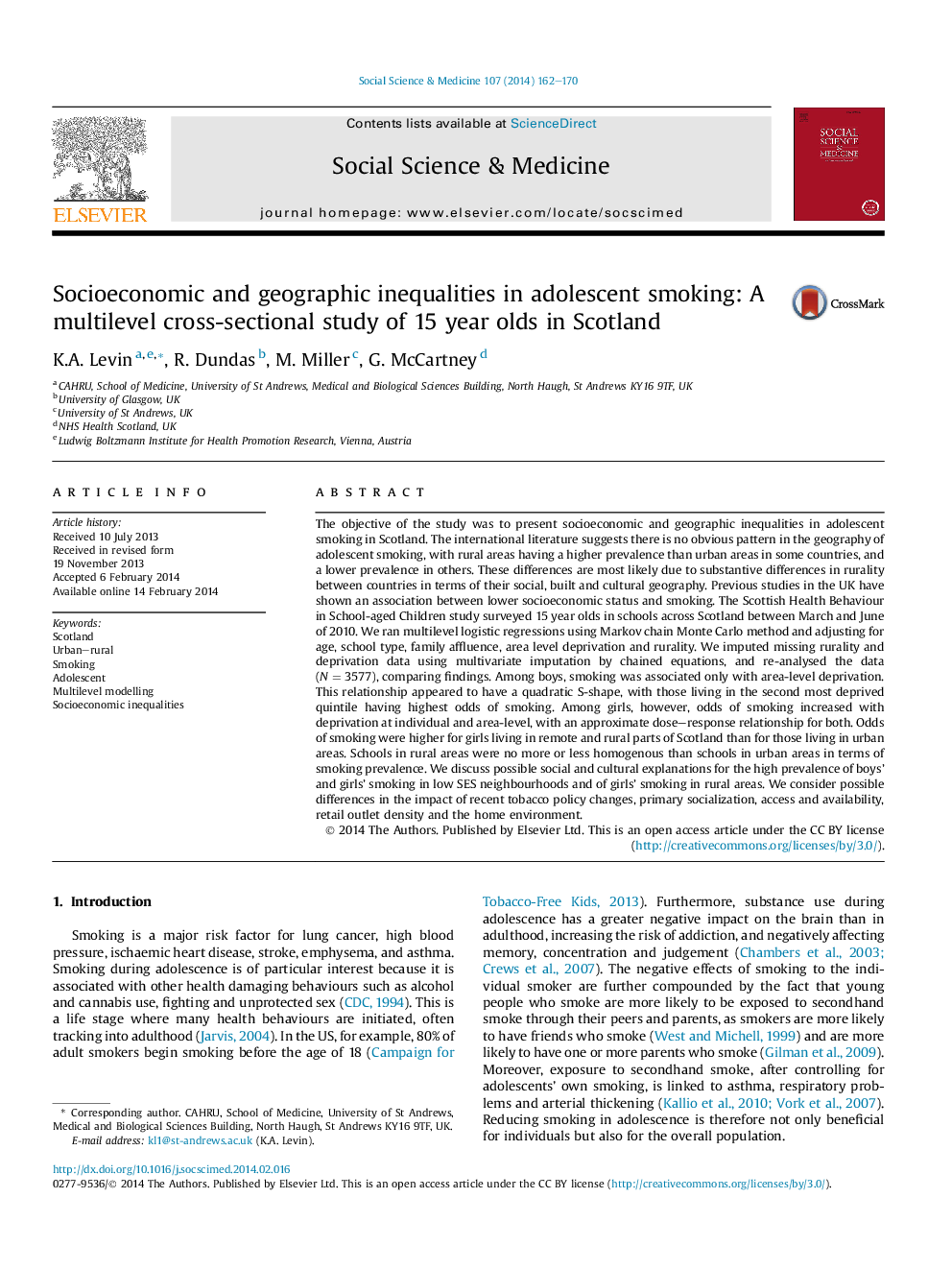| کد مقاله | کد نشریه | سال انتشار | مقاله انگلیسی | نسخه تمام متن |
|---|---|---|---|---|
| 7335612 | 1476061 | 2014 | 9 صفحه PDF | دانلود رایگان |
عنوان انگلیسی مقاله ISI
Socioeconomic and geographic inequalities in adolescent smoking: A multilevel cross-sectional study of 15 year olds in Scotland
ترجمه فارسی عنوان
نابرابری های اجتماعی-اقتصادی و جغرافیایی در سیگار کشیدن نوجوانان: یک مطالعه مقطعی چندسطحی از 15 ساله در اسکاتلند
دانلود مقاله + سفارش ترجمه
دانلود مقاله ISI انگلیسی
رایگان برای ایرانیان
کلمات کلیدی
اسکاتلند، شهری روستایی، سیگار کشیدن، نوجوانان مدل سازی چندسطحی، نابرابری اجتماعی
موضوعات مرتبط
علوم پزشکی و سلامت
پزشکی و دندانپزشکی
سیاست های بهداشت و سلامت عمومی
چکیده انگلیسی
The objective of the study was to present socioeconomic and geographic inequalities in adolescent smoking in Scotland. The international literature suggests there is no obvious pattern in the geography of adolescent smoking, with rural areas having a higher prevalence than urban areas in some countries, and a lower prevalence in others. These differences are most likely due to substantive differences in rurality between countries in terms of their social, built and cultural geography. Previous studies in the UK have shown an association between lower socioeconomic status and smoking. The Scottish Health Behaviour in School-aged Children study surveyed 15 year olds in schools across Scotland between March and June of 2010. We ran multilevel logistic regressions using Markov chain Monte Carlo method and adjusting for age, school type, family affluence, area level deprivation and rurality. We imputed missing rurality and deprivation data using multivariate imputation by chained equations, and re-analysed the data (NÂ =Â 3577), comparing findings. Among boys, smoking was associated only with area-level deprivation. This relationship appeared to have a quadratic S-shape, with those living in the second most deprived quintile having highest odds of smoking. Among girls, however, odds of smoking increased with deprivation at individual and area-level, with an approximate dose-response relationship for both. Odds of smoking were higher for girls living in remote and rural parts of Scotland than for those living in urban areas. Schools in rural areas were no more or less homogenous than schools in urban areas in terms of smoking prevalence. We discuss possible social and cultural explanations for the high prevalence of boys' and girls' smoking in low SES neighbourhoods and of girls' smoking in rural areas. We consider possible differences in the impact of recent tobacco policy changes, primary socialization, access and availability, retail outlet density and the home environment.
ناشر
Database: Elsevier - ScienceDirect (ساینس دایرکت)
Journal: Social Science & Medicine - Volume 107, April 2014, Pages 162-170
Journal: Social Science & Medicine - Volume 107, April 2014, Pages 162-170
نویسندگان
K.A. Levin, R. Dundas, M. Miller, G. McCartney,
